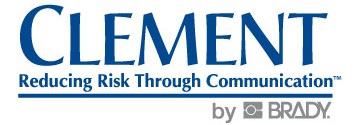CDC's Advice for Creating an Infectious Diseases Outbreak Plan
The Centers for Disease Control and Prevention (CDC) advises that all employers have an infectious diseases outbreak response plan in place to deal with the coronavirus as it continues to spread in the United States. The plan should cover the following:
- Identify possible work-related exposure and health risks to your employees.
- Review human resources policies to ensure that policies and practices are consistent with public health recommendations and are consistent with existing state and federal workplace laws
- Explore whether you can establish policies and practices — such as flexible work telecommuting and flexible work hours — to increase the physical distance among employees and between employees and others if state and local health authorities recommend the use of social distancing strategies.
- For employees who are able to telework, supervisors should encourage employees to remain at home instead of coming into the workplace until symptoms are completely resolved. Ensure that you have the information technology and infrastructure needed to support multiple employees who may be able to work from home.
- Identify essential business functions, essential jobs or roles and critical elements within your supply chains (e.g., raw materials, suppliers, subcontractor services/products and logistics) required to maintain business operations. Plan for how your business will operate if there is increasing absenteeism or if these supply chains are interrupted.
- Set up authorities, triggers and procedures for activating and terminating the company’s infectious diseases outbreak response plan, altering business operations (e.g., possibly changing or closing operations in affected areas) and transferring business knowledge to key employees. Work closely with your local health officials to identify these triggers.
- Plan to minimize exposure between employees and also between employees and the public, if public health officials call for social distancing.
- Establish a process to communicate information to employees and business partners on your infectious diseases outbreak response plans and latest coronavirus information.
- In some communities, early childhood programs and K-12 schools may be dismissed, particularly if the outbreak worsens. Determine how you will operate if absenteeism spikes from increases in sick employees, those who stay home to care for sick family members and those who must stay home to watch their children if dismissed from school. Businesses and other employers should prepare to institute flexible workplace and leave policies for these employees.
- Local conditions will influence the decisions that public health officials make regarding community-level strategies; employers should take the time now to learn about plans in place in each community where they have a business.
- If there is evidence of a coronavirus outbreak in the United States, consider canceling non-essential business travel to additional countries per travel guidance on the CDC website.
- Travel restrictions may be enacted by other countries, which may limit the ability of employees to return home if they become sick while on travel status.
- Consider canceling large work-related meetings or events.
Unlike other natural and man-made disasters, a pandemic can linger for an extended period, hitting the population in waves. A business should monitor health information sources both locally and nationally for any updates on future waves, and adjust its recovery procedures as necessary.
The CDC advises employers to contact state and regional health departments for more information:

